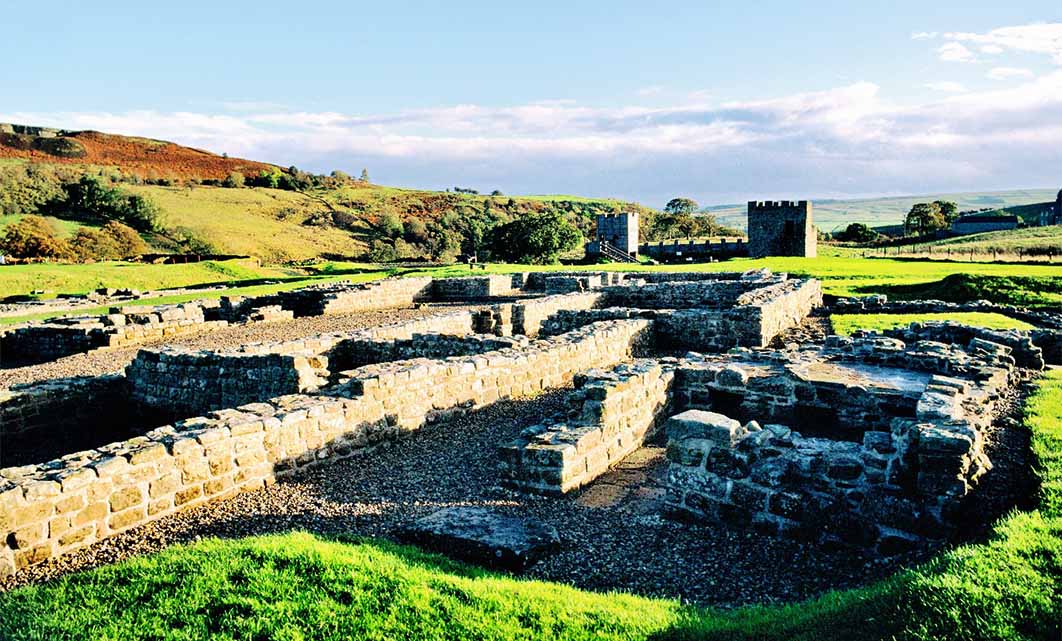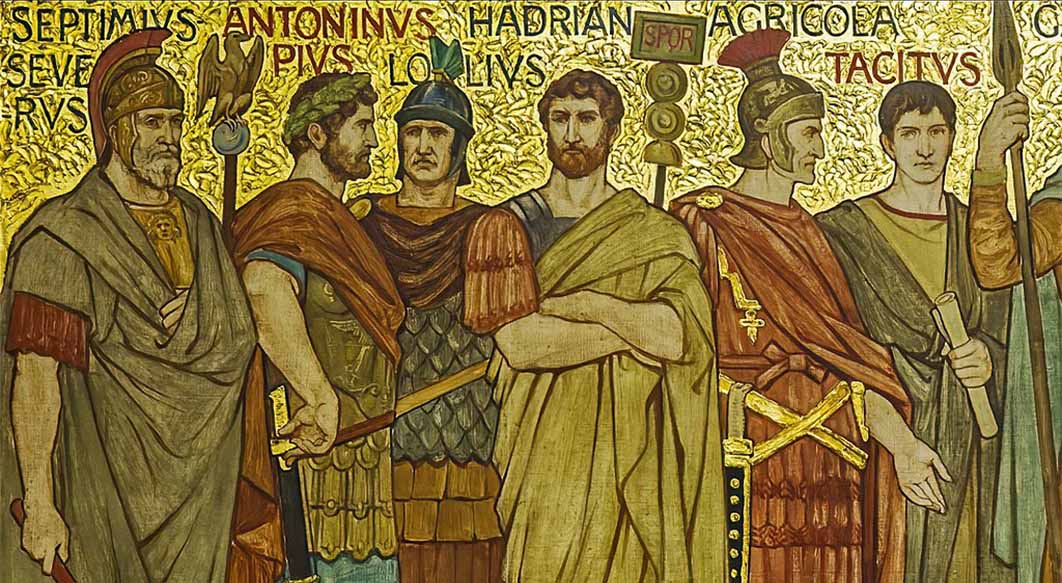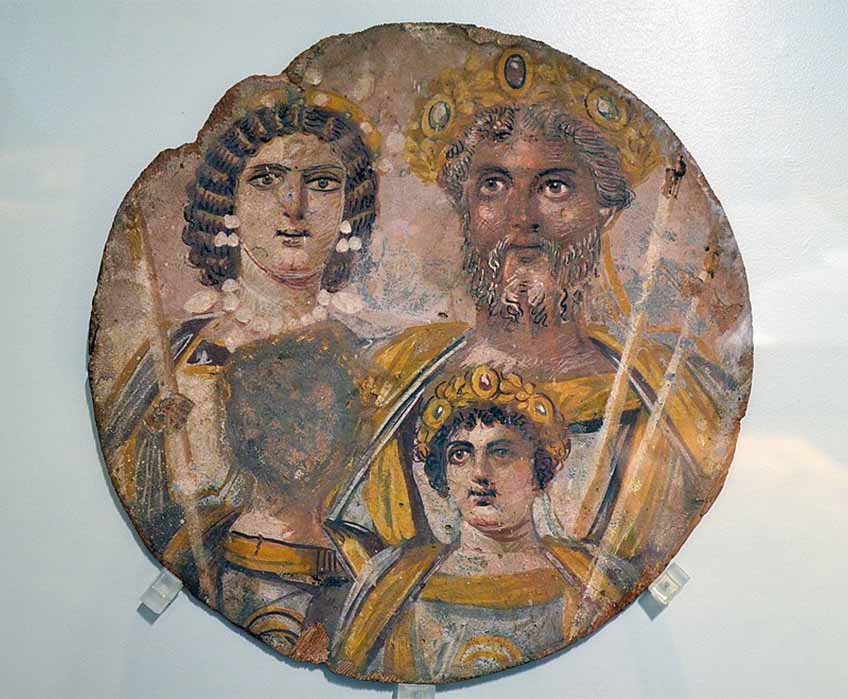
Revisiting Vindolanda, The Roman Outpost Of Hadrian’s Wall
Sitting proudly on the line of Hadrian's Wall in northern England, just south of the Scottish border, the Roman fort of Vindolanda has dominated the landscape for nearly 2,000 years. Originally built to guard Stanegate, the literal “stone road” built by the Romans which ran from the River Tyne to the Solway Firth, today it is situated near the village of Bardon Mill. The desolate location must have felt then, and today, a long way from Rome. Vindolanda is one of the most famous Roman sites in England, not just because it is a remarkable Roman site, but also because it has been at the forefront of pioneering archaeology for decades. More is known about the Romans that lived and died at Vindolanda than at any other Roman site in Europe.

Hadian, Agricola and Tacitus – last three on the right - among Roman generals and emperors in this frieze from the Great Hall of the National Galleries Scotland by William Brassey Hole (1897) (Public Domain)
Wooden Forts of Vindolanda
Vindolanda’s long history began in about 85 AD when the earliest forts were built on the site. These early buildings were constructed of turf and wood and today lie four meters (13 feet) below the surface in waterlogged anoxic soil. A year earlier in 84 AD the Roman author Tactius relates how the Roman governor general Agricola defeated a powerful British tribe, the Caledonii, at Mons Graupius in northern England and went on to press into Scotland. That same year however Agricola was recalled to Rome by Emperor Domitian and maintaining Rome’s presence in Scotland became impossible. The army withdrew back to the area of what is now Hadrian’s Wall and it was in this context that the first fort at Vindolanda was constructed.
This first fort was most likely built by the first cohort of Tungrians, an auxiliary unit of about 1,000 men who originally came from Gallia Belgica. The name and presence of their prefect Iulius Verecundus at Vindolanda in around 92 AD has been attested to by archaeological finds. Ten years later in 95 AD this early fort was replaced by a second, built on a larger scale by the ninth cohort of Batavians, men originally from an area around the Dutch-Rhine delta. This fort itself required repairs in 100 AD and was evidently not fit for purpose because when the ninth cohort departed five years later their fort was torn down rather than being repaired again. Its replacement was again built by the first cohort of Tungrians who were ordered back to Vindolanda and constructed a larger wooden fort.

Hadrian's Wall, Northumberland (ColobusYeti / Adobe Stock)
Revolt Against Emperor Severus
All of these wooden forts predated the building of Hadrian’s Wall in around 122 AD, but following the Wall’s construction the first fort to be built in stone was constructed in Vindolanda. In 195 AD the Roman Governor Clodius Albinus had participated in a revolt against Emperor Septimus Severus and as such had sent many of the troops stationed in Britain to Gaul. Severus triumphed but the loss of so many legionaries meant that the Roman presence in Britain was significantly weakened. Roman historical sources now tell that from 208-211 AD there was a rebellion in Britain against the Roman conquerors, which took place largely in the north, from Caledonia. This placed Vindolanda at the heart of the action.

The Severan Tondo, c. 199, Severus, Julia Domna, Caracalla and Geta, whose face is erased. Antikensammlung Berlin. (Public Domain)




